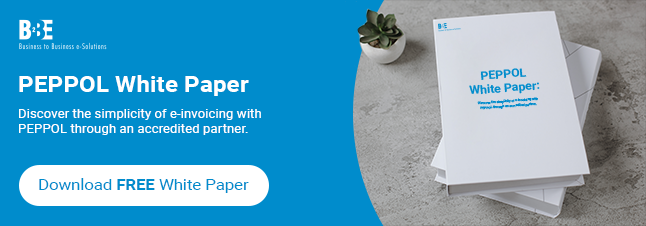For many businesses, adopting e-invoicing is the first step toward faster, more efficient accounts payable operations. But the real transformation begins after an invoice arrives. That’s where automated invoice processing takes over — eliminating manual handling, reducing errors, and speeding up the entire invoice-to-payment cycle.
So, what actually happens once your business receives an e-invoice? Let’s walk through an example.
How does automated invoice processing work?
Step 1: Invoice Intake and Data Capture
The first step of automated invoice processing is intake and data capture. Once an e-invoice arrives — whether through a direct integration, a supplier portal, or a network like Peppol — the system automatically captures all key invoice data. There’s no need for manual entry or PDF scanning.
The invoice fields (such as invoice number, supplier name, date, line items, tax values, and payment terms) are instantly parsed and mapped into a structured format. Whether it’s UBL, XML, or another format, the system is ready to process it from the get-go.
Step 2: Validation Against Purchase Order or Goods Received Note
Next, the invoice is automatically validated against existing procurement records.
- If there’s a matching purchase order (PO), the system checks that the invoice line items, quantities, and prices align.
- If the goods have already been delivered, the invoice is then matched to a goods received note (GRN) to confirm the delivery and quantity.
Any discrepancies — like overbilling, missing POs, or duplicate invoices — are flagged for review. Otherwise, the invoice proceeds without interruption.
Step 3: Routing for Approval
Invoices that pass validation can be automatically routed to the correct approvers based on predefined rules — such as department, spend limit, or project code. Approvers are notified digitally and can approve from within the system, speeding up decision-making.
If thresholds are exceeded or exceptions are found, the workflow then ensures the invoice goes to the right people — without delays or paper trails.
Step 4: Posting to ERP and Scheduling for Payment
Once approved, the invoice is posted directly into your ERP or finance system — fully coded and ready for payment.
This seamless connection between invoice intake and financial posting removes the need for manual rekeying, helps prevent data entry errors, as well as ensuring your payment cycle stays on track.
Why Automated Invoice Processing Matters
Automated invoice processing helps teams scale without adding headcount, eliminates manual bottlenecks, and improves compliance. It’s not just about speeding things up — it’s also about getting better visibility, accuracy, and control over your payables.
Ready to take your next step in e-invoicing?
B2BE’s e-Invoicing solution help businesses move beyond basic invoice receipt and into full automation — with global compliance, validation workflows, and ERP integration built in. Contact us to learn more today!
About B2BE
B2BE delivers electronic supply chain solutions globally, helping organisations to better manage their supply chain processes, providing greater levels of visibility, auditability and control. We’re driven by a passion for what we do, inspired by innovation, and underpinned by a wealth of knowledge. With over 20+ years of experience, the B2BE teams operate worldwide.
For more information, visit www.b2be.com.

